
Storage cotyledons of a walnut, partly covered by their nutshell
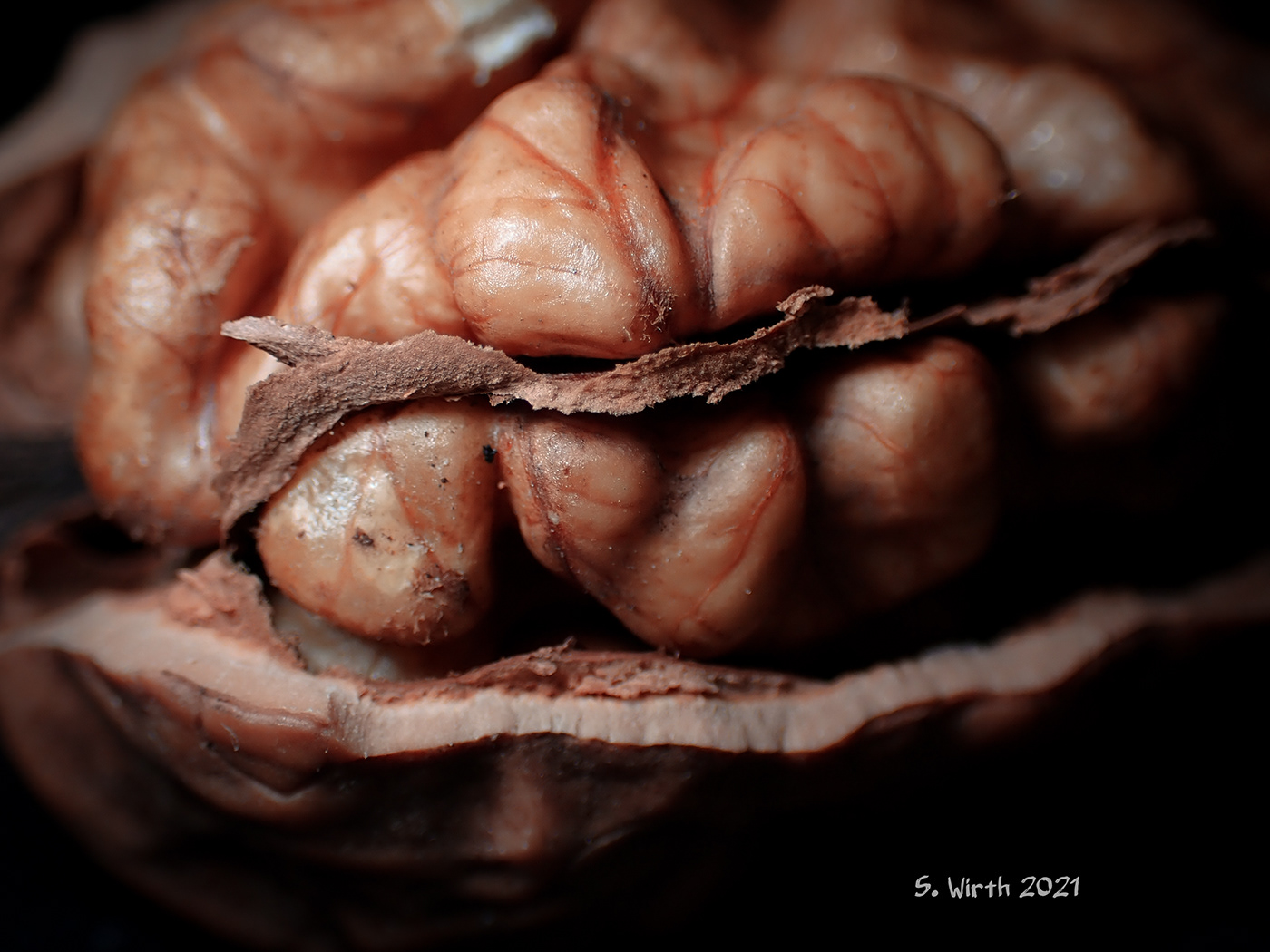
Exposed
I had eighteen walnuts, eighteen shapes, none like the other. Six of them had been opened up. The padded storage cotyledons carefully being arranged in a bilateral symmetry, resembling a human brain. Exposed to the camera, naked and unprotected. A sensible and uncovered truth, individualism as a defective symmetry. Large bead on the right, but a small bead on the left, two bulges on the left, but only one on the right.
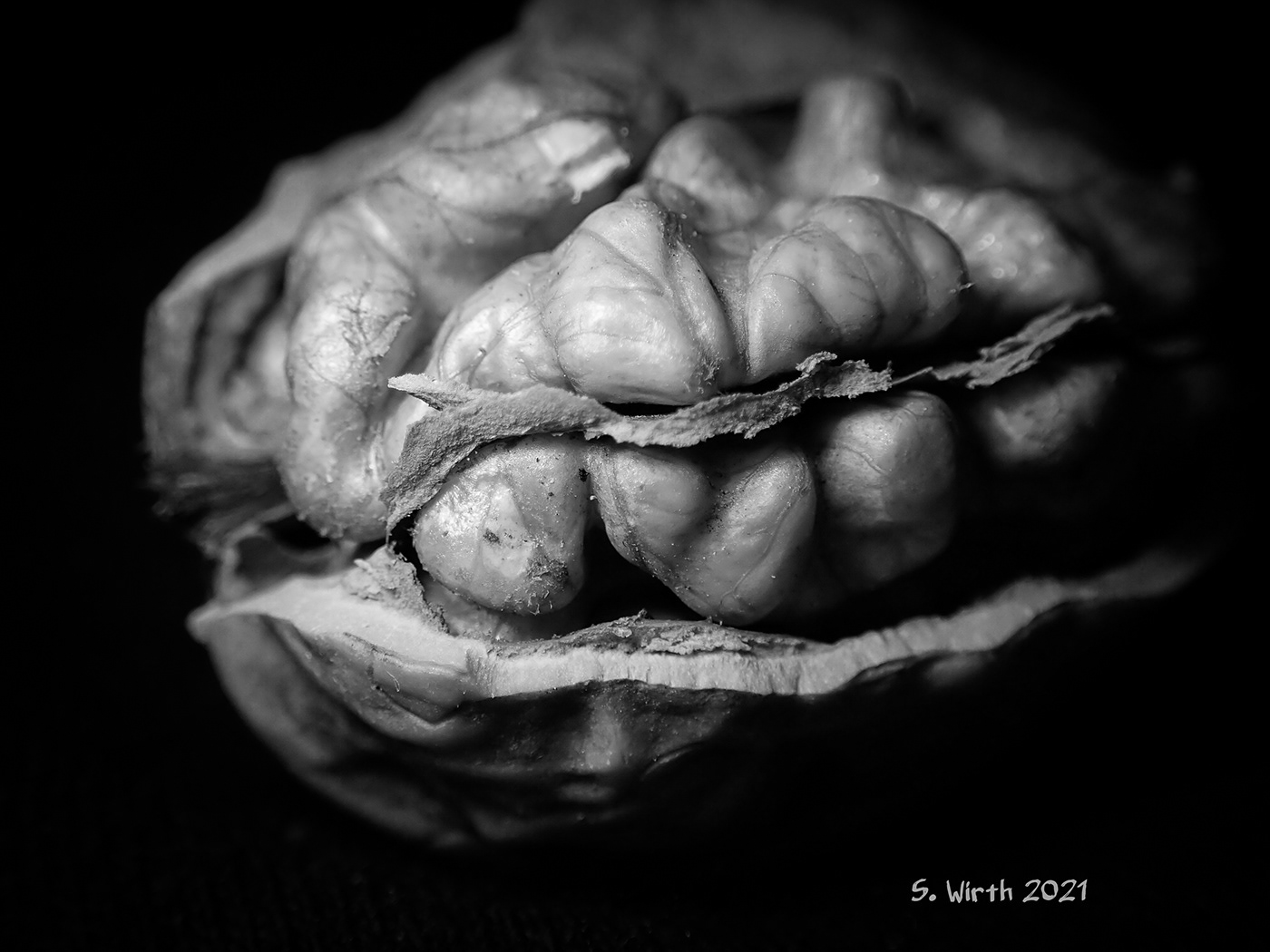






Nut
A nut is a nut is a nut. Or can a nut be anything else than a nut? Spontaneous categorizations of objects are based on unconscious comparisons with seemingly familiar objects. This often leads to the truth and yet often fails. Then only a knowledge of the object's history reveals its true nature.
Is a seed covered by a pericarp, consisting of a wooden endocarp, the mesocarp fleshy and the exocarp membraneous, then a seed, resembling a nut, can be in truth a drupe. But is a seed covered by a fully lignified pericarp, then it's a nut. A walnut was traditionally considered being a drupe, not a nut. But finally, modern ontogenetic reconstructions revealed the fleshy cover being something else than a pericarp, and the pericarp indeed being identical with the lignified walnut shell, thus making a walnut morphologically to a nut.
A walnut is a nut, is a nut, is a nut. A hazelnut is a nut, is a nut. The peanut is a nut, is a nut, is a nut. But the coconut is a drupe, is a drupe, is a drupe. The correct morphological categorization as indication for a true nature? No, still nothing else than another comparative categorizations. A truth is always the answer to a question. Simple truths result from simple questions. Complex questions result in a diversity of findings, a mosaic of answers, leading to the formation of a truer truth. The walnut as member of the taxon Juglandaceae, the hazelnut as member of taxon Betulaceae, the peanut as member of taxon Fabaceae and the coconut as member of taxon Arecaceae. Nut and drupe as a results of independent evolutionary trails.
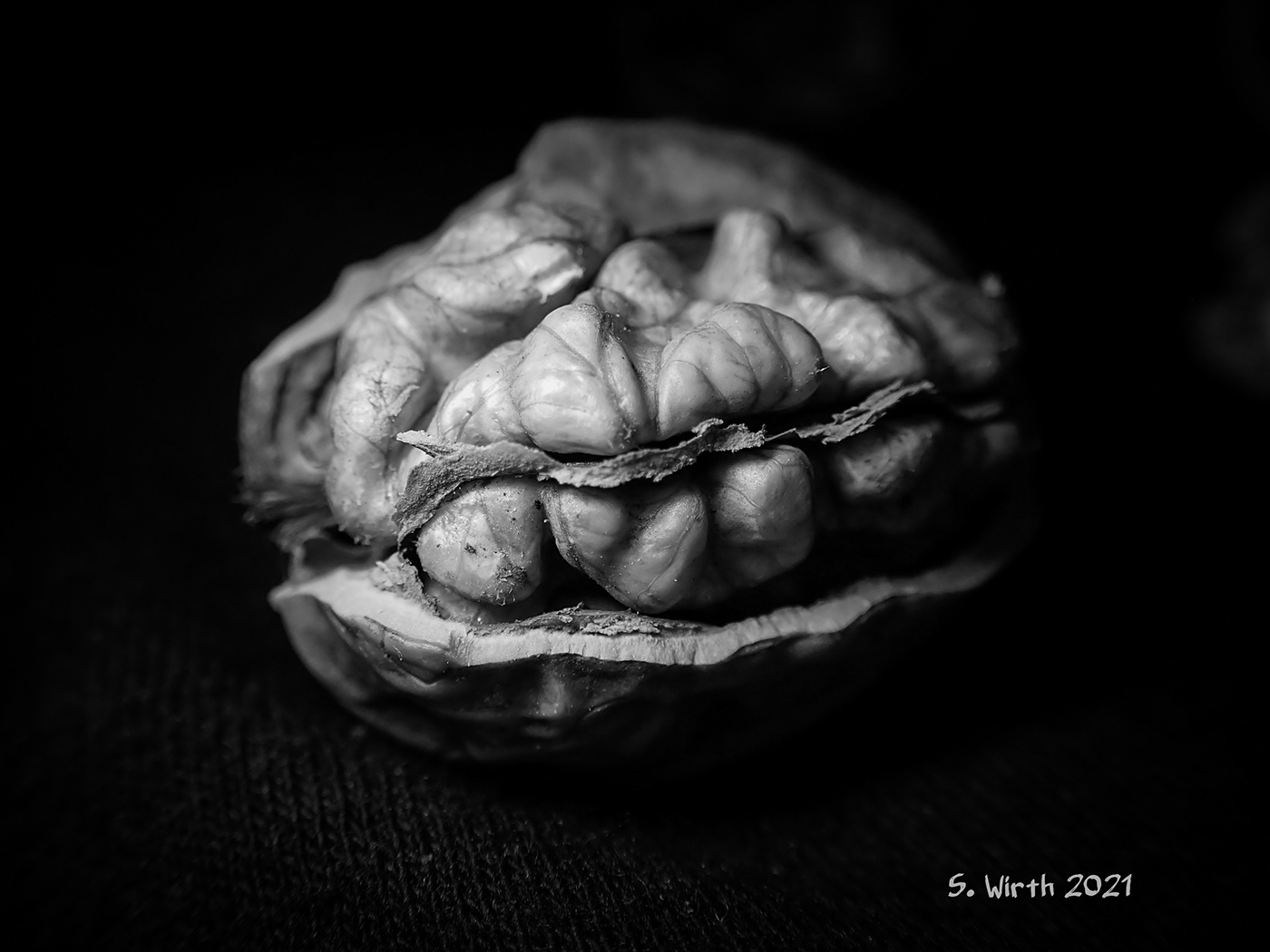
Black and white shades of an amorphic structure

Allelopathy
When a sender sends its message and the recipient reacts to it, interaction has taken place. In case the recipient answers and the original sender understands this answer, it's a case of communication, but not necessarily a conversation.
Without a mouth, without a brain and without gesturing skills, no conversation in plants is going to happen. They rarely communicate, but often interact. " Who ever you are, stay away" says the walnut tree to its competitors, speaking with a dominant chemical tongue. Too embarrassed for an answer and unable to resist, the recipients die speechlessly, when the inhibitor compound cinnamic acid is washed up from the walnut trees by the rain to the neighboring ground.







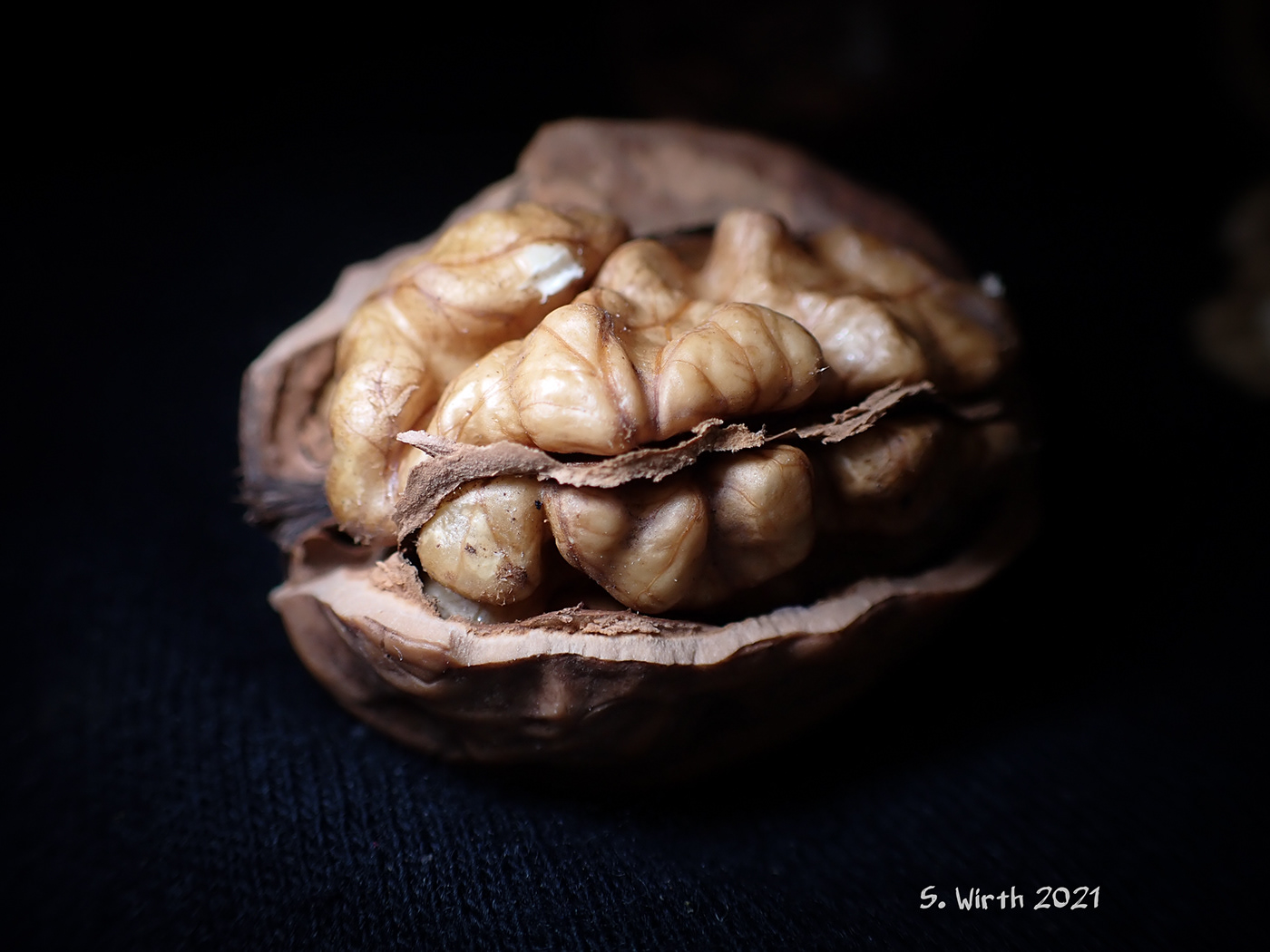
Anemophily
Reproduction in plants of the Angiospermae requires that haploid male gametes, enclosed by walls of the pollen bodies, get to the female recipients. The last common ancestor of Angiospermae had animal pollen distributors. What a limitation of ecological options, thought a very ancient ancestor of walnuts and related trees, why not going back to much more basic conditions and using the wind for a more independent and efficient pollen dispersal?

Sections separated by a septum

Separated
Borders isolate and protect. Barriers as insurmountable obstacles, even in the small micro world of a walnut seed. A real septum, shaped by syncarpic adhesions of two carpels, and an additional secondary septum divide the ovary cavity in four sections. Barriers protect under best circumstances against bacteria, viruses and other parasites. Isolation between different components in the world of organisms, an important trigger for evolution.
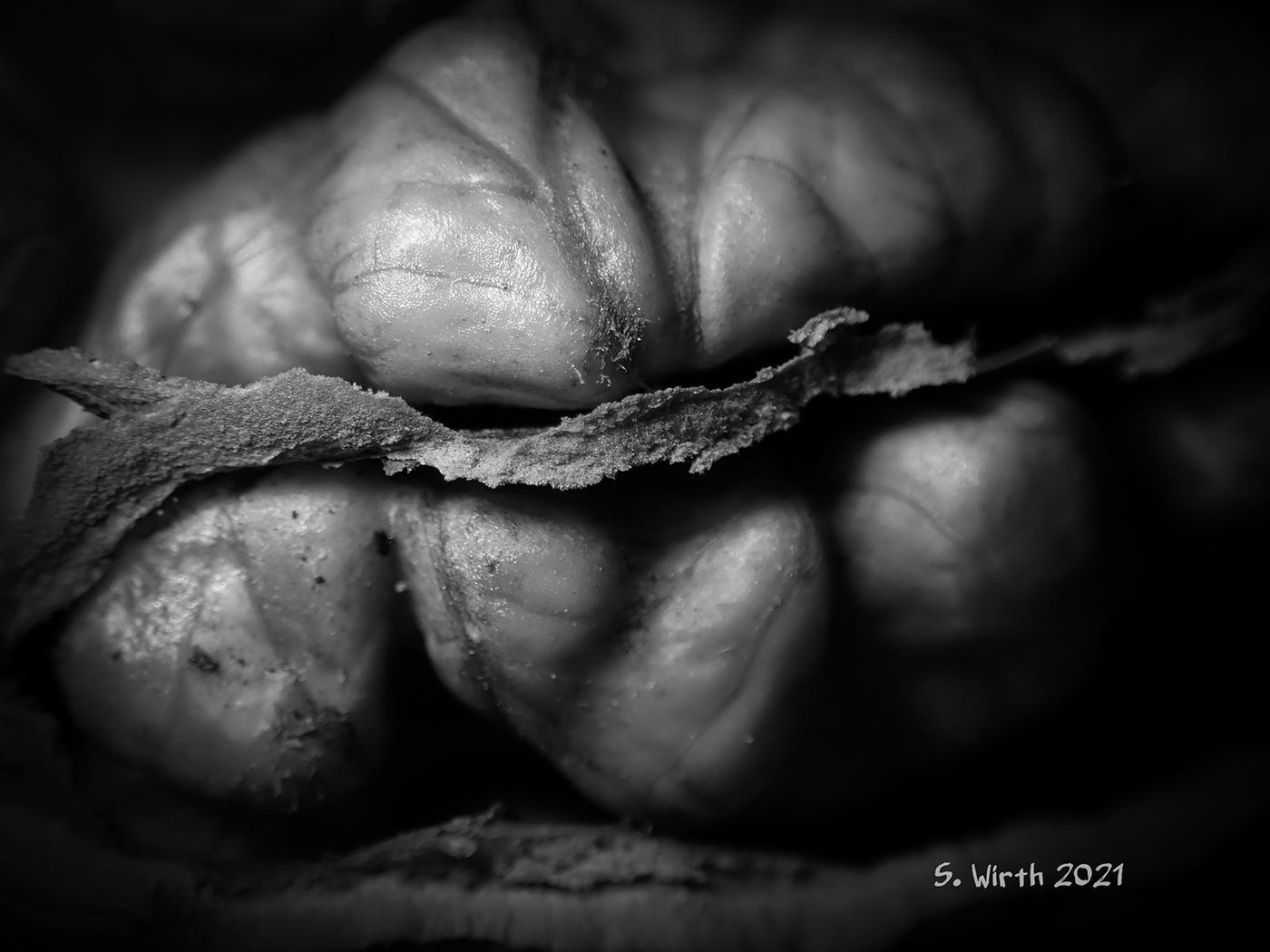
Food
23 percent of a walnut consist of carbon hydrates, containing a high amount of Linolenic acid, having a high percentage of zinc and potassium, B vitamins, magnesium, phosphorus, sulfur and iron as well as calcium and pantothenic acid.
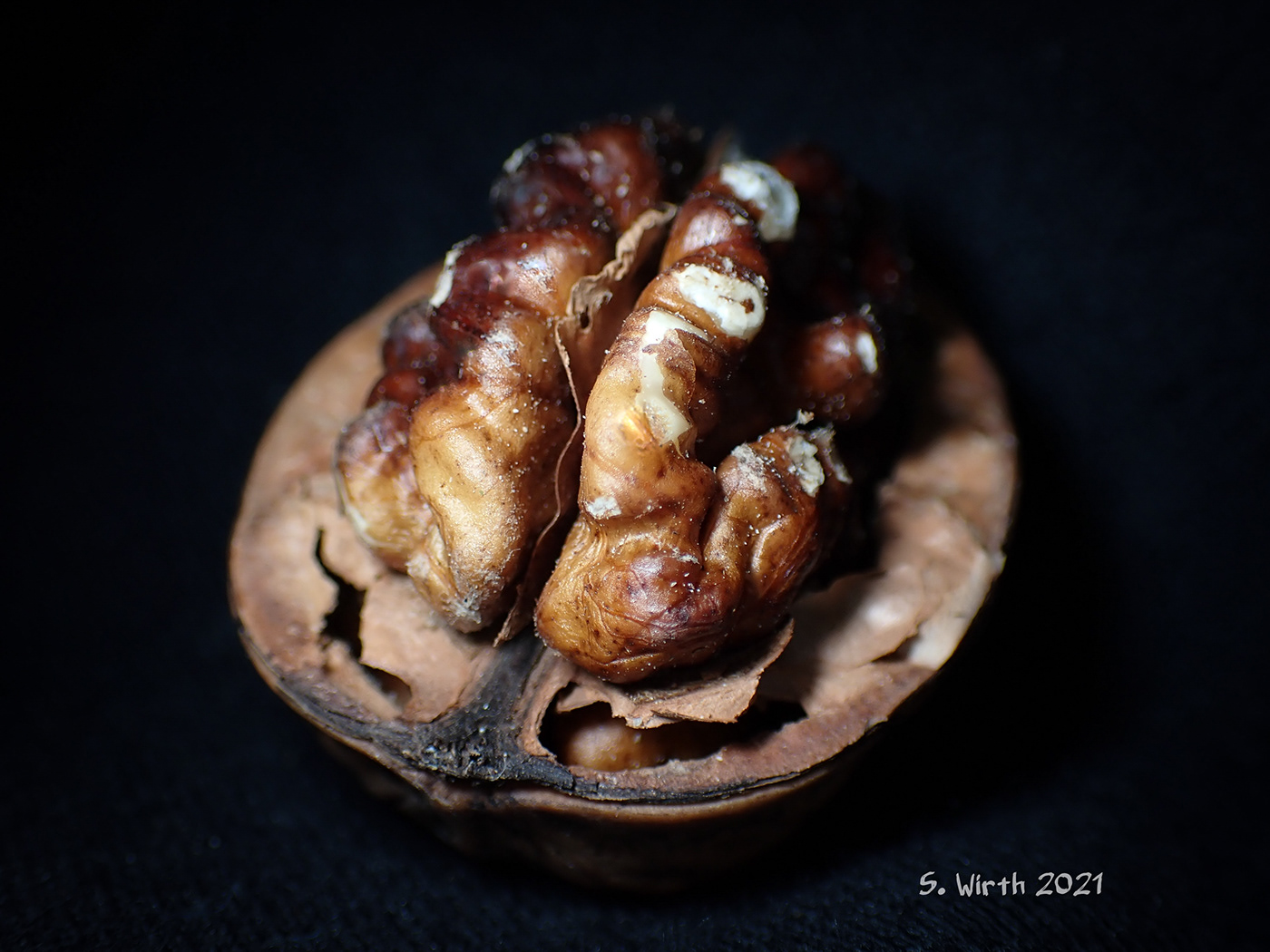
History
How many accidents are necessary to allow a species travelling around the world by itself? All is so often human made. Human distributors of bacteria, viruses, animals or plants changed the world, and not always to its best. Walnuts of genus Juglans witnessed the ancient cradle of Europe. Being transferred from ancient Greece to the ancient Roman Empire and from their to Central Europe, it followed the human way of colonization and modern civilization. A first literary mention came from the region around the Gulf of Naples in the Western coast of Southern Italy.






Greece and Italy
It is reported by an ancient historian that the walnut was introduced to the Roman Empire from Greece between the 7th to the 5th century B.C..
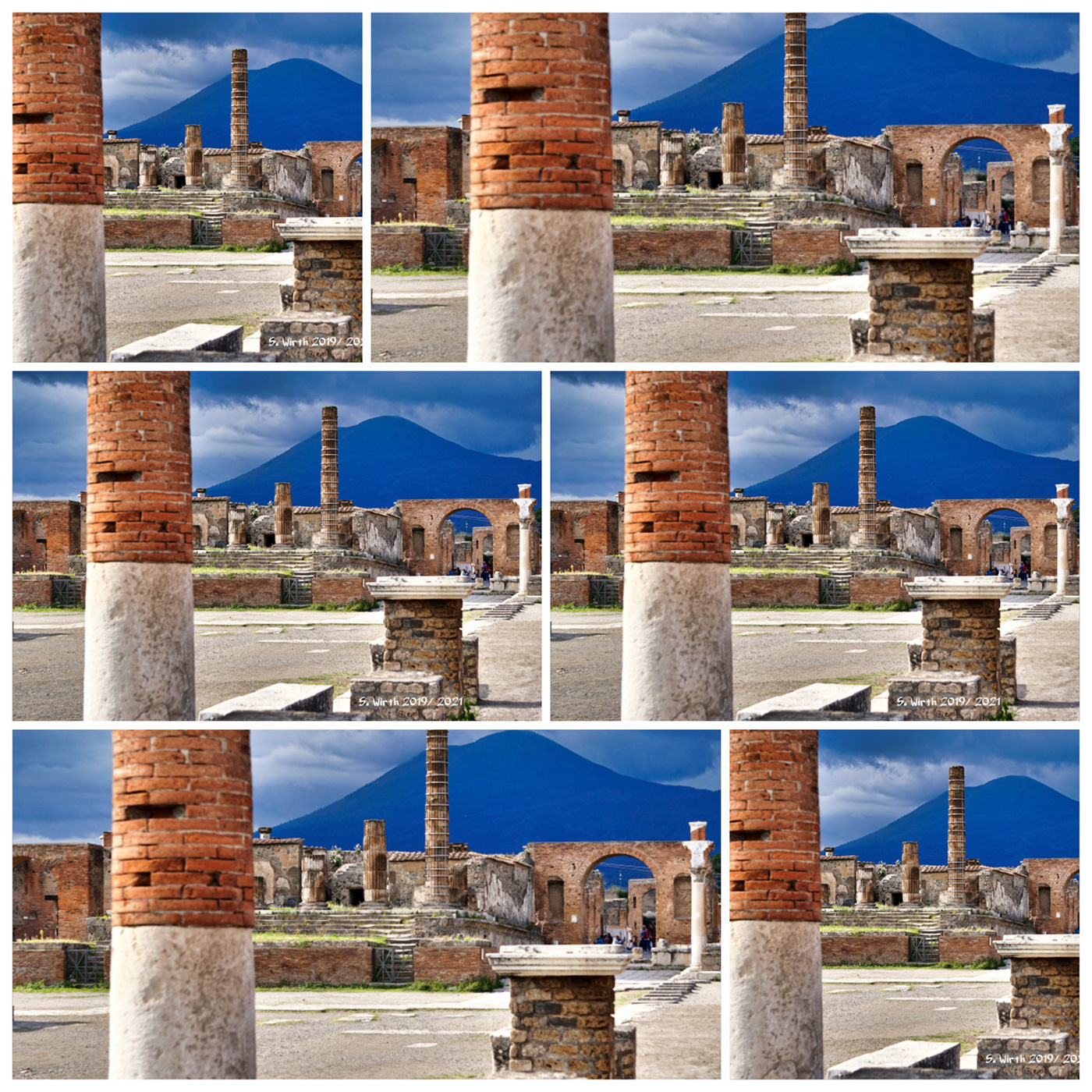
Pliny the Elder
Gaius Plinius Secundus Maior (*23 or 24 AD in Novum Comum, + 25 August 79 AD in Stabiae, Gulf of Naples) was a renowned scholar, administrative officer and a natural historian, famous for his encyclopedia Naturalis historia and his death during the eruption of Mount Vesuvius in 79 AD. His nephew, Pliny the Younger, descibed the very specific kind of eruptions during these Vesuvian outbreaks, named to his honor today a Plinian eruption.
Pliny the Elder , besides Lucius Iunius Moderatus Columella (+ 70 AD), reported in his Naturalis historia for the first time about walnuts, their origin and their cultural importance. Consequently Pliny explains the import to the Roman Empire to have happened 7th to the 5th century B.C. and that the walnut played an important role in the Greek mythology as Dios balanos (acorn of Zeus). The Romans adopted that term and translated it into Iovis glans (nut of Jupiter). The genus name of the walnuts, given by Linné in 1753, derived from this ancient Roman term.
Pliny also reported that after his victory over Mithridates, Gnaeus Pompeius Magnus (* 106 BC - + 48 BC) discovered in his secret writings the recipe for a presumed medicine against intoxication, being based on two walnuts, two figs and 20 rue leaves.

Land of the Sun
When naming even both, Greece and Italy, as the cradle of Europe, then this sunset over the ruins of the ancient city Pompeii indicates the light, the Mediterranean temperatures and the humid climate that offered all important factors for walnuts to grow under almost divine conditions.
Pompeii
The ancient cities Pompeii and Herculaneum were entirely destroyed by the Vesuvian eruptions in 79 AD. They are worldwide famous sources for the best preservation of ancient Roman everyday items. A direct window into the past. The last moment of life maintained for eternity. Due to different modes of destruction by the Vesuvio, organic tissue was better preserved in Herculaneum than in its more famous neighbor city Pompeii. Walnuts persisted in both locations.
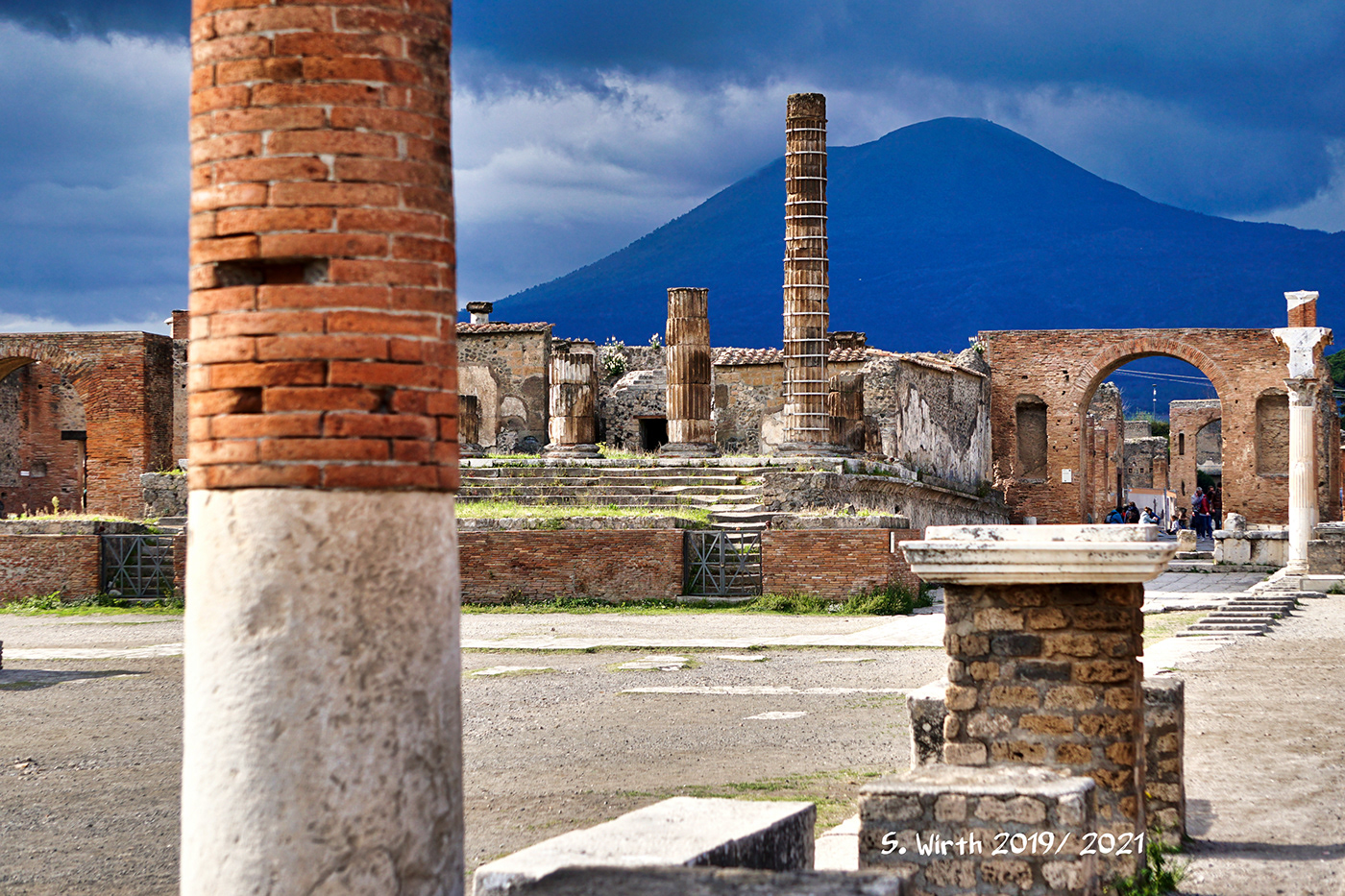
Forum of ancient Roman city Pompeii with Jupiter temple and Vesuvio in the background, 2019/ 2021

Clouds over Pompeii
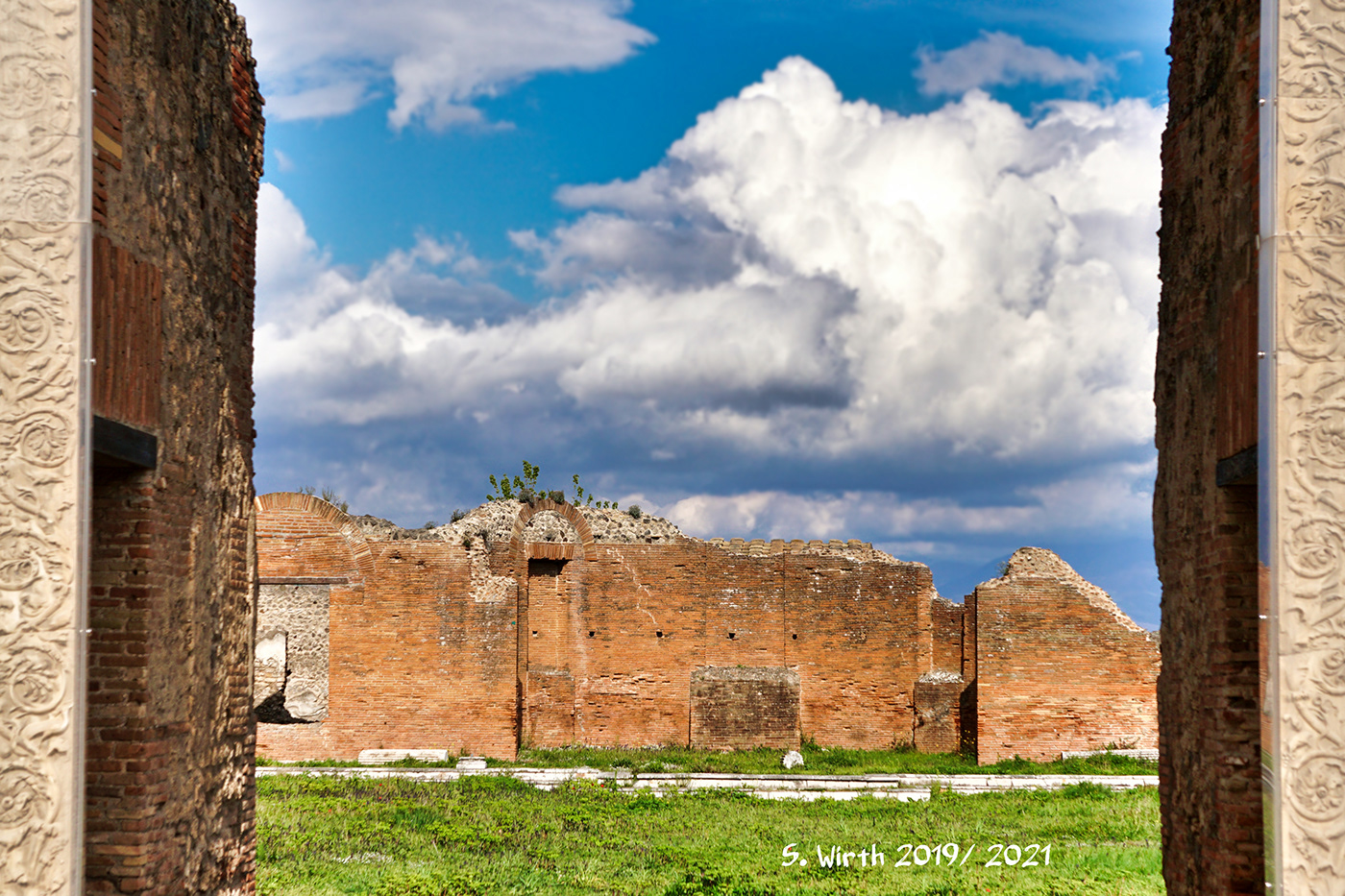
Eternity
The vulcanic eruption and subsequent pyroclastic clouds burned the entire city of Herculaneum down. Organic tissue carbonized within a fraction of a second. An involuntary metamorphosis as guarantee for a surviving in eternity. Organic tissue in Pompeii was mostly embedded into layers of ash, along with a much worse preservation of organic material.
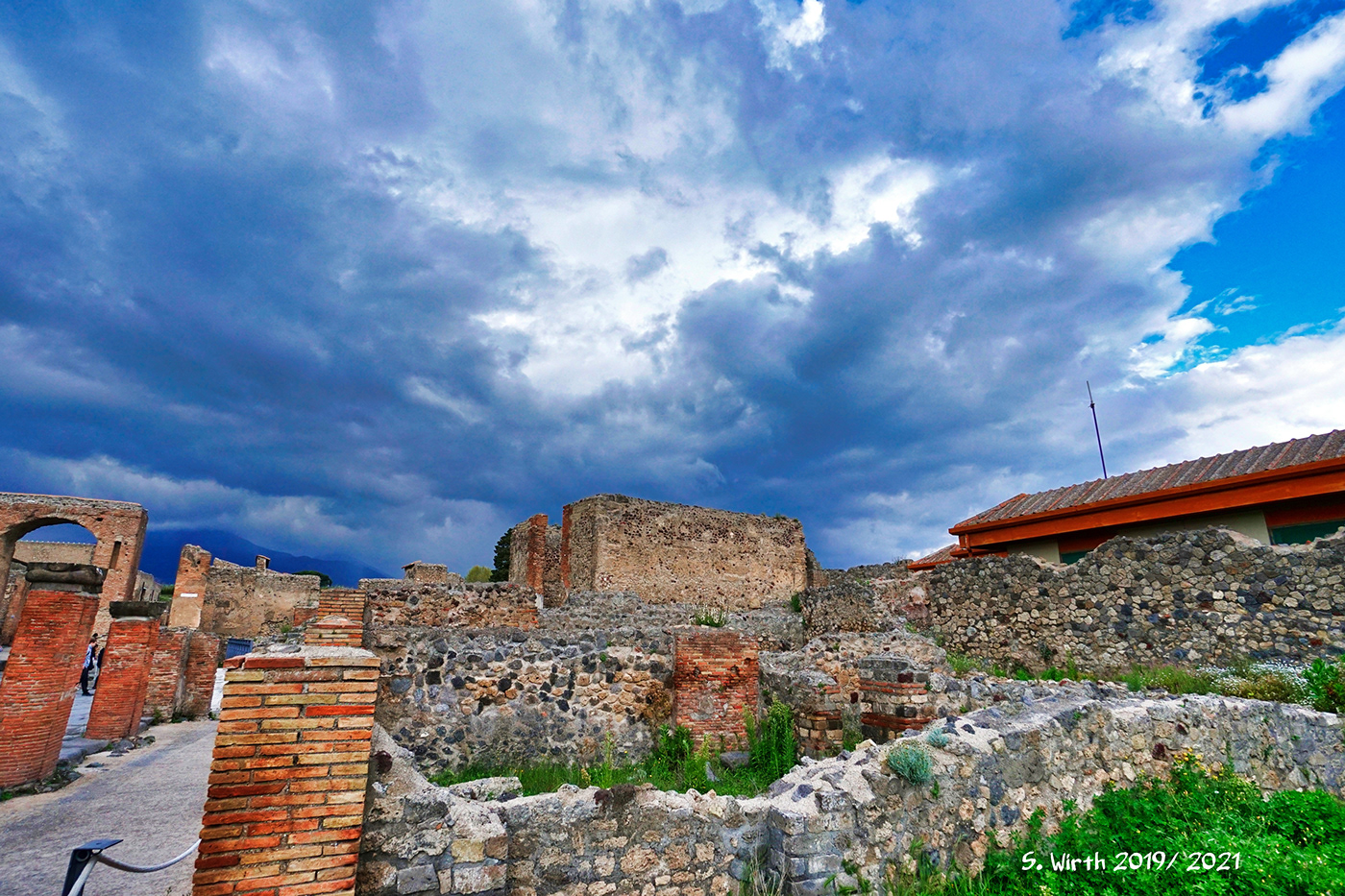
In Pompeii mostly only first floors persisted until today
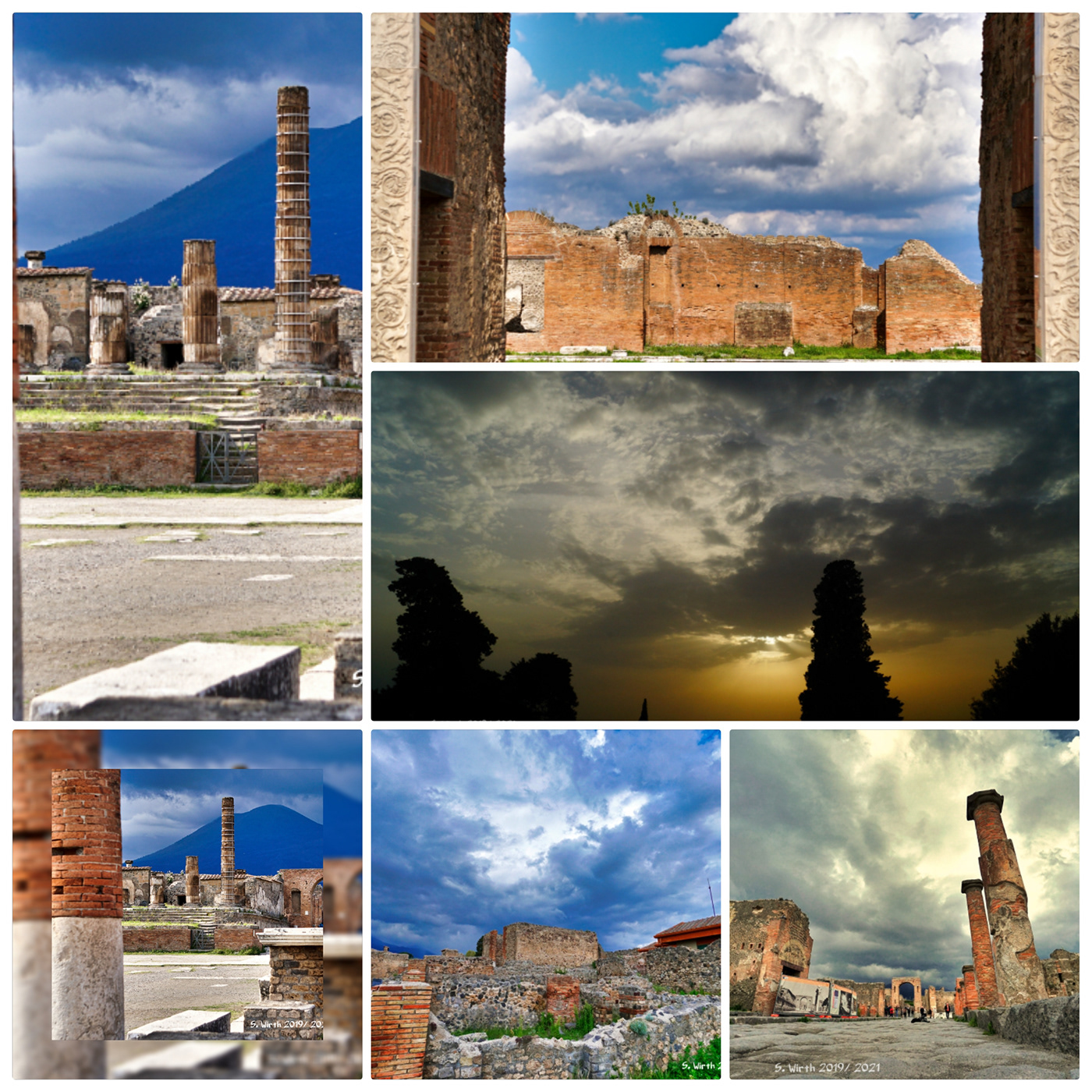
Heritage of Mankind
Archaeological findings indicate that walnuts were cultivated as food source by mankind since more than 9000 years of human history.
All copyrights Stefan F. Wirth, 16 January 2021, Berlin




